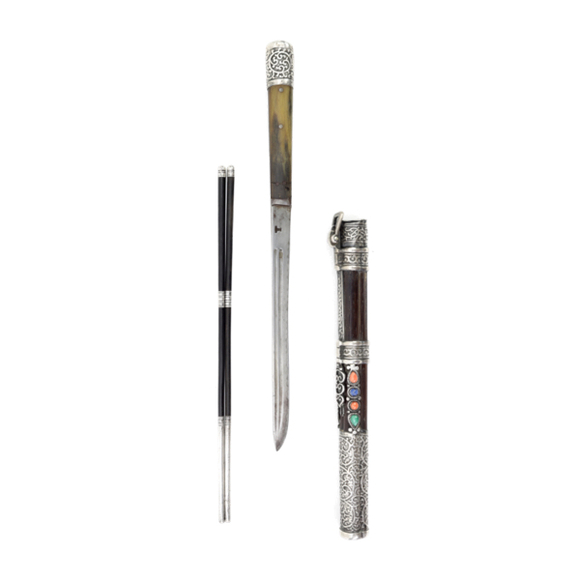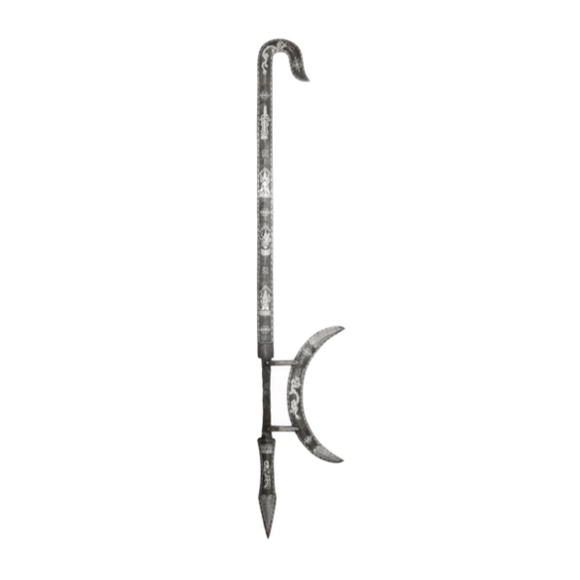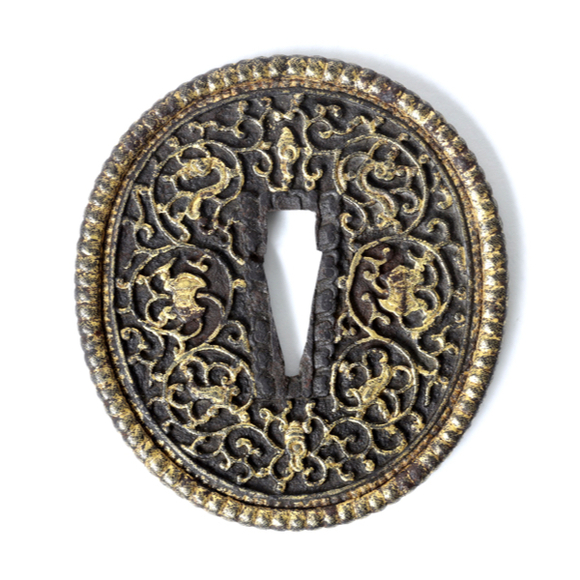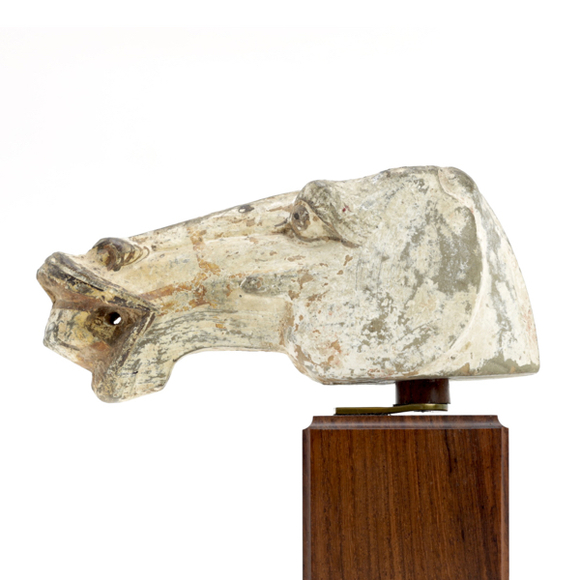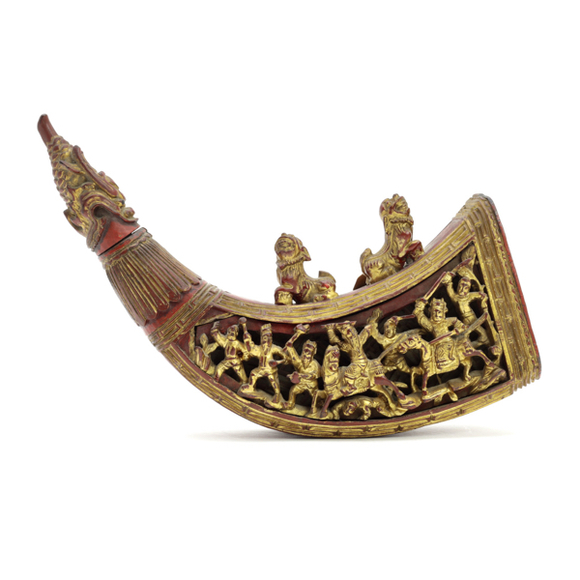Language: Mandarin Chinese
Origin: Collector's jargon
Description
The liǔyèdāo is the most common form of Chinese saber of the Ming and Qing dynasties. They come in many shapes and sizes: Some are nearly straight with only a very gentle curve, while others are more deeply curved. They come in narrow and wide varieties and display a large variety in blade design, with different configurations of grooves, bevels, and blade profiles. Some sabers that are of liǔyèdāo curvature have alternative names based on blade profile or cross-section.
 A classic 18th-century liǔyèdāo.
A classic 18th-century liǔyèdāo.
Origin of the term
I have not been able to find the term mentioned in historical texts. It needs mention that most texts don't discuss blade specifics because they were largely up to the user, this is true for martial arts manuals as well as military texts on arms production and maintenance. One would expect sword making workshops to have had more specific terminology but as far as I know, none such information has survived and all traditions were cut off in the 20th century. Today, Liǔyèdāo is a standard part of the vernacular of Chinese sword collectors, both in China and abroad.
Alternatively
According to Jin Yiming's Single Defense Saber of 1935, narrow sabers with a gentle curve can be called miáodāo (苗刀) or "sprout saber", referring to the shape resembling a rice sprout.1 This may have been a historical name for at least some narrow liǔyèdāo but today the term is exclusively used for a large, narrow two-handed saber.
Notes
1. See: Single Defense Saber (單戒刀) by Jin Yiming (金一明). Published by, New Asia Press (新亞書店印行) Oct, 1932. An excellent illustrated translation by Paul Brennan is available here.
Some examples

17th-century. Northern China. Notice the very gentle curvature and gradual widening towards the tip that is typical for northern Chinese sabers of this period.
 17th to early 18th century. Northern China.
17th to early 18th century. Northern China.
 18th century. Northern China. Mounts possibly late 18th to early 19th century but in the style of court work of the 17th century.
18th century. Northern China. Mounts possibly late 18th to early 19th century but in the style of court work of the 17th century.
 18th century.
18th century.
 Late 18th century. Southern China.
Late 18th century. Southern China.
 Early 19th century. Southern China.
Early 19th century. Southern China.
 Mid 19th century. Standard pattern Qing officer saber.
Mid 19th century. Standard pattern Qing officer saber.
 Mid 19th century. Standard pattern Qing soldier's saber.
Mid 19th century. Standard pattern Qing soldier's saber.
 Circa 1900. Standard pattern Qing soldier's saber from around the Boxer Rebellion.
Circa 1900. Standard pattern Qing soldier's saber from around the Boxer Rebellion.
Some rarer forms
 17th century. An unusually broad liǔyèdāo.
17th century. An unusually broad liǔyèdāo.
 An 18th-century liǔyèdāo with clipped tip. By virtue of their blade shape such swords are also called yànchìdāo (雁翅刀) or "goose wing saber" among collectors.
An 18th-century liǔyèdāo with clipped tip. By virtue of their blade shape such swords are also called yànchìdāo (雁翅刀) or "goose wing saber" among collectors.

